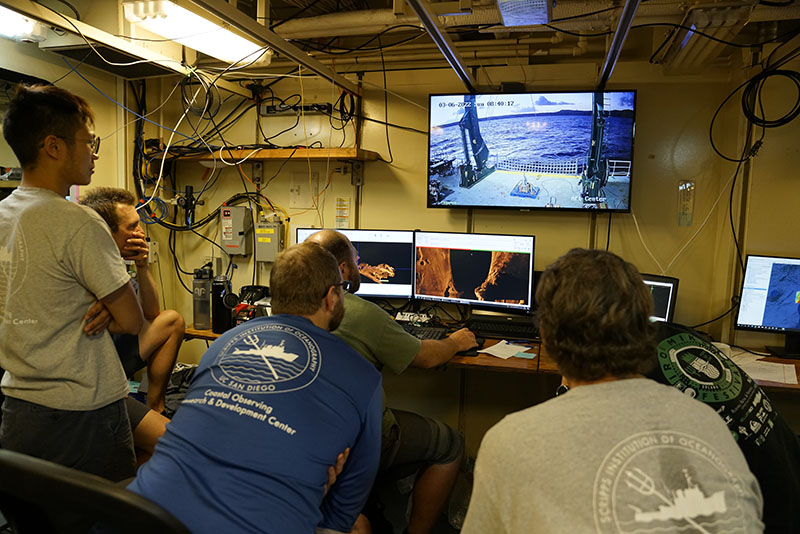

On board Research Vessel Kilo Moana during the Deepwater Surveys of World War II U.S. Cultural Assets in the Saipan Channel expedition, researchers from Scripps Institution of Oceanography examine side-scan sonar data (visible on screen in a bronze color) for anomalies that could indicate aircraft wreckage. Side-scan sonar data were collected from a REMUS 600 in water depths as great as 600 meters (1,967 feet). The data reveal a detailed picture of the seafloor, including measurements of the size of objects and how high objects project above the seafloor. The large monitor shows the researchers a real-time view of the deck of the ship, where preparations for deploying a remotely operated vehicle are taking place.